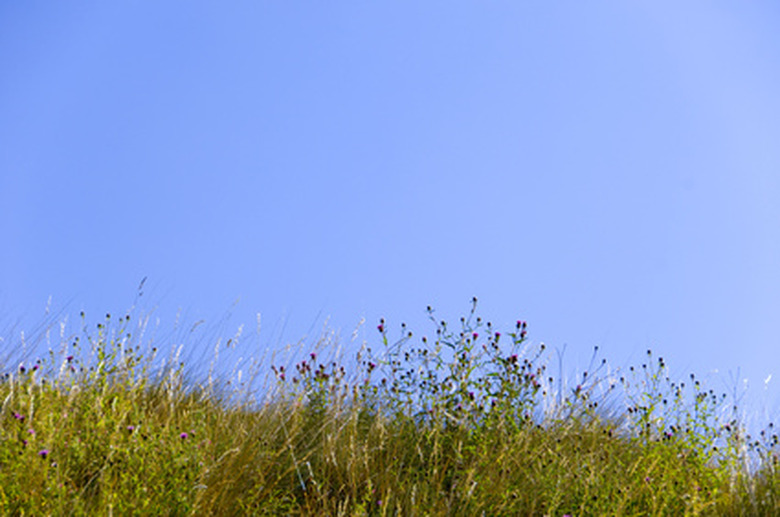Types Of Wild Grass
Widespread distribution of wild grass types is seen throughout world. In North America, wild grasses cover thousands of acres of prairies, fields, forests, marshes, swamps, deserts and pastures. A valuable natural resource, wild grasses are an abundant and reliable food source and shelter for wildlife and a food source for livestock and humans. Many wild grasses are valued for the effects of their root systems on erosion control, and for their industrial products, including a renewable source of biofuel.
Sideoats Grama
Of the Poaceae or grass family, this perennial graminoid grows throughout most of the southern two-thirds of North America. Sideoats grama (Bouteloua curtipendula) is valued as nutritious forage for wildlife, particularly elk, antelope and deer, and for livestock. It establishes a deep rooting system and prefers dry to moderately moist soils and actively grows in the summer. Its yellow flowers bloom in mid spring, and at mature height, it reaches 3 feet tall. Sideoats grama grows in full sun.
- Widespread distribution of wild grass types is seen throughout world.
- Sideoats grama (Bouteloua curtipendula) is valued as nutritious forage for wildlife, particularly elk, antelope and deer, and for livestock.
American Beachgrass
Along the west coast from British Columbia to California and the northeastern part of North America, down to South Carolina, grows American beachgrass. A perennial graminoid member of the Poaceae or grass family, American beachgrass (Ammophila breviligulata) is native to the country's coastal areas, thriving in the full sun and their well-drained sandy-soil conditions. A bunch grass that establishes a strong and deep rooting system, American beachgrass is valued for its sand or soil stabilization, particularly in coastal sand dunes. It grows to less than 3 feet in height—growing actively from spring through fall—and thrives in moderately moist to dry soil conditions and full sun. Other common names: marram grass, beach grass and coastal beachgrass.
Smooth Cordgrass
Throughout the wetlands of the southern west coast, southern coast and east coast of North America, smooth cordgrass grows in dense formations that prevent shoreline and soil erosion. Though native to the east coast, smooth cordgrass is an introduced, invasive wild grass on the west coast. Smooth cordgrass (Spartina alterniflora) is a perennial bunchgrass of the Poaceae family that actively grows during the warm seasons of spring and summer. Its yellow flowers form in late spring, and it reaches less than 4 feet in height. It thrives in moist to wet conditions and full sun. Smooth cordgrass is also known as saltwater cordgrass, oystergrass and saltmarsh cordgrass.
- Along the west coast from British Columbia to California and the northeastern part of North America, down to South Carolina, grows American beachgrass.
- A perennial graminoid member of the Poaceae or grass family, American beachgrass (Ammophila breviligulata) is native to the country's coastal areas, thriving in the full sun and their well-drained sandy-soil conditions.
Eastern Gamagrass
Distributed throughout the eastern half of the United States, eastern gamagrass (Tripsacum dactyloides) is a warm-season, perennial wild bunchgrass that actively grows from spring through summer. It grows up to 5 feet in height in full sun and moist soil, and its yellow flowers bloom in early summer. Related to corn, eastern gamagrass is valued as a forage crop for livestock, and in the wild it is a food and shelter source for wildlife. Its other common names include wild corn, bullgrass, eastern mock gama, maicillo oriental and fakahatchee grass.
